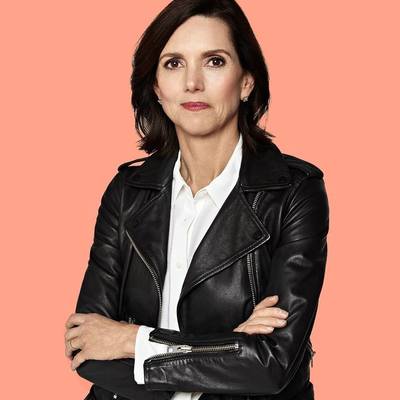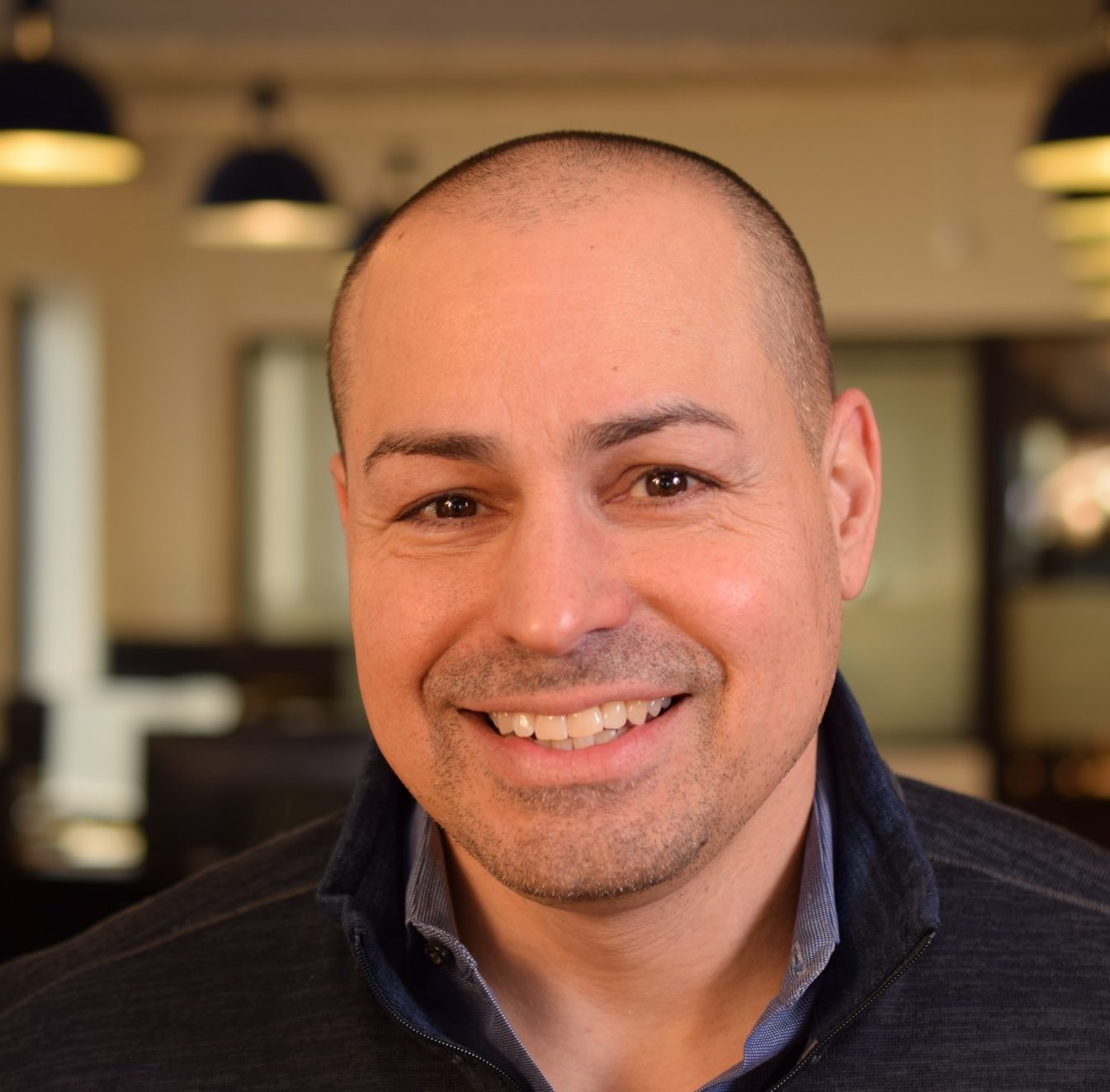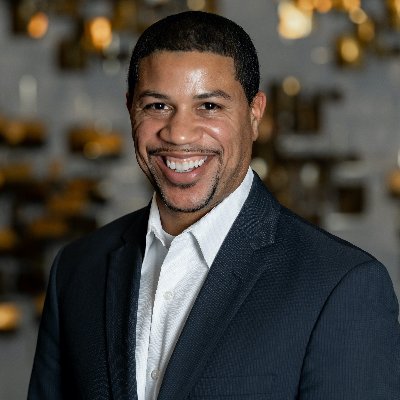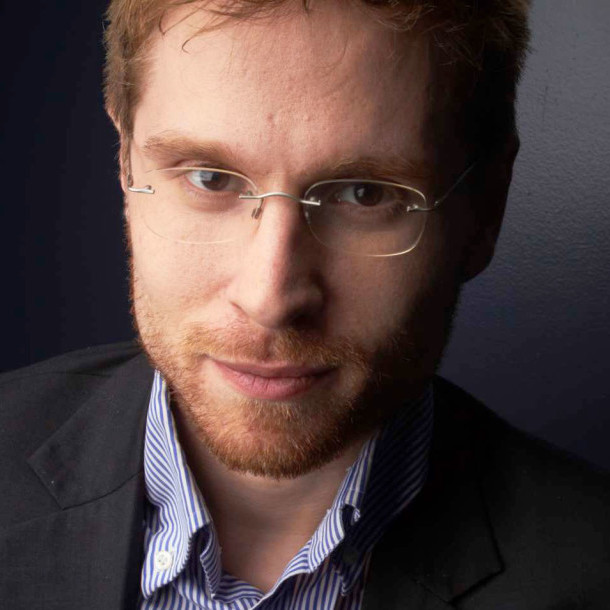When you meet someone with the career of Beth Comstock, you might be tempted to ask, “Help. Tell me how you are more productive.” But Beth says that’s the wrong question.
More than likely your industry is facing huge changes. Asking you and your team to be more productive isn’t the right move, and too much efficiency can actually be a bad thing.
Instead we need to embrace our roles as humans to find new patterns in the world around us. New things to teach the machines who will then learn how to be efficient. This advice is true not just for your career, but for all of humanity to get to a better future of work.
Beth warns against the dangers of too much efficiency because she’s passionate that we need to get ready for the future as soon as possible and we won’t just be a more efficient version of ourselves, but will have a totally new look. This episode is for all the people who are mindful of the future and are fighting for what’s next.
What we learned from this episode
-What the ‘imagination gap’ is and what dies there
-Machines were made to be more efficient, not humans
-If you don’t spend time imagining and looking for new patterns, you’ll get surprised, and then left behind
-Getting your head up is essentially trying to find the new patterns that don’t exist yet.
-“No” is better translated as “not yet” in the corporate world
What you can do right now
-Getting your head up can be as simple as breaking your routine and taking a new route to work
-Start a Field Trip Friday of your own
-Take back the 10% of your time that you lose trying to be efficient and use it to get your head up
Key quotes
“What I worry is that we zealously pursue efficiency and optimization. We’re rewarding short-term at the price of long-term progress. And I think it’s squeezing the imagination out of us.”
“What we’re seeing in the age of AI and machine learning is that some of those basic tasks are going to be taken over by artificial intelligence, leaving us with our strategic capability, our critical thinking, our creative problem solving. But are we ready for it? As an organization, are we training ourselves to think through all these potential scenarios? I think not.”
“I need to reallocate my time to do this. Because otherwise, I’m going to be surprised. I’m going to be behind.”
“Your job as a manager is to say, ‘How can I help?’ And your job as a team member is to say to your manager, ‘I need help.'”
Links mentioned
Today, our guest is Beth Comstock. She’s a speaker and author and former executive for GE, NBC, CNN, CBS and many other roles. And this is Work Minus Too Much Efficiency. Hi, Beth. How are you?
Hi, Neil. Good. How are you?
Doing excellent. I’m really excited to talk to you. People call you the change wrangler. I like that title. It’s a good one.
Yeah, well, a few people. They probably called me other things, too, but that’s the one I chose.
So, you have quite a full and rich and storied history to you. Why don’t you just give people a little bit of background about who you are?
So, I spent nearly three decades working in business. I grew up on the media side, some of the companies you mentioned, worked mostly at NBC. That’s how I got to go into GE, where I worked in marketing, which became really a launchpad for me and the teams I worked with to learn about markets. And suddenly we were about innovation and where change shows up is when you go and live in the market. So, I left GE at the end of 2017 where I had been chief marketing officer and then vice chair of innovation. And I put out a book last year and now you’ll find me, if not on bookshelves, out wandering the world somewhere.
And the book is called “Imagine It Forward”. Tell us about the title.
“Imagine It Forward” is about hopefully a bit of a rallying cry for people who work in organizations to make sure that there are activists for the future in our organization, that there’s somebody and hopefully some part of everybody who’s mindful of the future and fighting for what’s next. That’s hard and I’m sure we’ll get into that today. But I experienced that in business and I experienced it especially with those of us where we’re in the middle of our career or the middle of the organization so much as expected. And we all need some encouragement and some practical tools. So, that’s especially who I was dedicating the book to, people in the middle of the company and the middle of their career.
And that’s really our core audience, too, people that are in the middle, trying to figure things out. Now, most of these people tend to be, I mean, we’re just trying to keep up with today or yesterday. So, when you’re talking about bringing in imagination, trying to take things forward, that’s a big topic to try to say, not only do you need to execute well what you’re doing now, but see what’s coming in the future.
Well, to me, it would start with this basic premise, I almost called the book “Permission Granted” because my core philosophy, certainly in my career and what I’ve seen working with others, is this notion that you have to give yourself permission to try things, to take a risk, to open up, to discover. It’s a lot to ask people, but I argue how can you not do that because if you don’t pick your head up on occasion, you will be surprised, you will fall behind, you will be fearful. And I worry, especially for everyone at the middle of the organization, either you want to get there, or you’ve been there. The reality is every company right now is facing huge disruption and transformation. And it’s the people in the middle of the companies, the middle of the organizations, who are expected to get it done. And so, so much is expected. So, I think we do need the tools, the encouragement, the practical advice. So, a lot of what I talk about is very practical. I try to make it practical because I think everybody has too much on their plate as it is. So, can you just add a few tips, a few challenges, it’s almost like behavior modification, just a few things that you’re doing differently so you’re shifting your mindset.
Well, let’s get into our topic today. We’re talking about too much efficiency, which sounds ludicrous. How could we be too efficient? What do you mean by that?
Well, it is, again, one of these core philosophies I feel like I developed in the course of a career. If you would have met me a couple of years ago after we got over our, “Hey, what do you do? How’s your job going?” conversation, I’d probably say, “Help. Tell me how you are more productive. I need every tip I can get. I can’t keep up with the amount of email, with all the meeting requests, with everything.” And we’re all, everyday, you look at all the self-help books, all the thought leadership, so much of it is about productivity and efficiency. I’m convinced that from the career I had and the people I worked with, we were able to also figure out a way to make room for discovery, to carve out a bit of time to think, to explore, to open ourselves up, to test things, to learn things. And I’m actually quite worried because I actually call it, as part of setting up my book, I think of it as a problem that I call the imagination gap. And to me, the imagination gap is where options for the future go to die. It’s this space between the critical thinking and creativity we need to solve new problems in new ways and our dogged insistence of doing things the way we’ve always done them, just better, faster. And I experienced this, especially in a career at GE, we had processes for our processes. We had six sigma, all kinds of methodology. And you need that. Don’t get me wrong. But what I worry is that we zealously pursue efficiency and optimization. We’re rewarding short-term at the price of long-term progress. And I think it’s squeezing the imagination out of us. So, that’s my core belief in setting this too much efficiency argument up.
Yeah, that’s fantastic. On our show, we often talk about the split between human tasks and system tasks, things that robots are good for, things that humans are good for. I feel, even as you’re describing, that same tension in myself, like I’m always trying to be more productive. I’m always trying to find new ways to go. But in the end, I feel like it’s a losing game. It’s not something I can win because I can never be so productive that I can match a machine or that I can match these things. And it’s almost like you’re saying, I’m playing the wrong game, right?
Yeah, I think all of us are in some ways. The way you just said it, Neil, and me, I’m the same, it makes us sound like machines. We are machines ever more productive and efficient. And I think what we’re seeing in the age of AI and machine learning is that what’s some of those basic tasks are going to be taken over by artificial intelligence, leaving us with our strategic capability, our critical thinking, our creative problem solving. But are we ready for it? As an organization, are we training ourselves to think through all these potential scenarios? I think not.
We have not been training ourselves. I think that’s true. You talk about this imagination gap. I’m going to get into more of that. If imagination is a skill, an exercise you need to do, what are some of the ways you can recognize that deficiency and build up those skills again?
Well, imagination is such a broad word. Specifically, I’m referring to it as a bit of the critical and creative problem solving, solving new problems in new ways. So, there are a couple of simple things you can do. One is to what I said earlier, that mindset shift, you have to give yourself permission to allow space to think differently, to go explore things. That go explore things is a critical piece of it. A rallying cry I believe in is make room for discovery. It’s some much easier to say, “But I’ve got 10 more emails to do,” as opposed to say, “Can I take half an hour at lunch to get out and walk around the block? Can I walk a new way to work? Can I go meet customers where they are as opposed to having them come to my conference room? Can I go with my team? Can we go exploring in our next meeting?” I used to do something with the teams I worked with, we called it Field Trip Fridays. Once a quarter, once a month, we’d go as a team to a customer, to a new concept, a startup, visited professor, to just explore things together.
And I have two simple rubrics to help think about this. One is, as I’m saying this, people are like, “Yeah, right. But you don’t know. I have no time.” And I know you don’t have any time. And none of us have as much time as we want. But I guarantee you, if you just look at your calendar, and you were to say if I took back 10% of my time to pick my head up and think about what’s next, what’s new. I guarantee you’ve got it because I bet you 10% of your time is doing emails that don’t matter, showing up or demanding meetings that you already know the answer, just going through the same motions that just sometimes make us feel good, or we just don’t know a different habit. So, take back 10% of your time.
And what are you going to do with that time? You’re going to get out in the world. You’re going to go explore. My other simple rubric is what I call going on threes. I get out and I explore things. I just wander and make myself available to see what’s happening. I keep a notebook of interestingness. I actually have a folder on my phone as well. And when I’m out discovering and I’ll say, oh, that’s really interesting, make note. See it a second time or some iteration of it, I go, huh, is that a coincidence? Then third time, I just declare it’s a trend. I don’t need McKinsey to certify it. And then it’s a way to say to the teams I work with or to myself, how can I learn more about this? And then you start to dig in. So, those are two simple things. Make time. And then once you’re out there, start exploring and looking for patterns. And finally, I think what you’re trying to do is get out and see things that are very different, even weird. And work does not make room for weird. So, what you’re having to give up is a bit of over efficiency that probably has diminishing returns, to get out and look at things that make you uncomfortable or weird because they may be where change is starting to emerge and what you need to understand it.
And these tasks you’re talking about, making time to explore, find new things, and imagine things, these are fundamentally human tasks. It’s difficult to imagine a computer sitting there imagining what might be out there without the data to back it up with or to be able to spot a pattern just out of one or two things that are there. Very difficult for a machine to do that. But that’s what we’re great at as humans to be able to get into these things. So, how do we push over to the edge in terms of you talk about self permission a lot. So, where does that fall into this?
Well, I think it’s a mindset shift. I mean, again, I think if you’re like, “Yeah, but you don’t know my boss. You don’t know my investors. You don’t know my company,” whatever. And that’s true, I don’t. But most of us, I think often use these things somewhat as excuses. “I have too many emails, I can’t possibly get out and do that.” And it’s just a matter of saying, “I need to reallocate my time to do this. Because otherwise, I’m going to be surprised. I’m going to be behind.” And so, it’s a mindset shift. And I used to write out permission slips for myself and the teams I worked with. It sounds really hokey. But this idea, and it is, of just saying, I, Neil, give myself permission to take a risk on something, go ask questions about something new. I worked with a woman, actually just heard from her today. And she was in a role where in our company, she was looking at blockchain and Bitcoin very early. And she had no expertise, we didn’t know where she was going. I just heard from her today, she’s built a whole business out of it, just by a simple picking our head up, asking some questions, creating a pattern recognition that we could all rally around and suddenly created a new path for her. So, you don’t know what’s out there until you pick your head up and take a look at it.
I really like this metaphor, picking your head up, because, I mean, even quite literally in our day, we see people with their heads down, either at their work or on their phones or doing something, and there’s so much to be seen around us if you’re on the subway or you’re walking around or you’re just sitting around a table, to see the people around you, pick your head up and see new things that are around you. That’s a really powerful image.
I love the way you said that, Neil. I mean, I think simple things that I mentioned briefly earlier. Take a new route to work one day and see what you acknowledge. And then maybe when you go back to the old route, you’ll see things very differently. When you’re on the subway or the bus or the train commuting in, I bet if you start looking around, you’ll notice people are wearing things you hadn’t noticed were suddenly on trend. You’re seeing things you hadn’t seen before. Just asking different questions, as opposed to, “Hey, Neil, what do you do?” “Hey, Neil, what’s something you’ve seen recently that surprised you? What something in your industry you thought would never happen that is?” One of my favorite questions to ask people is think about something 10 years ago, you thought was weird but now today is mainstream. So, Neil, if I ask you that, what’s something you thought, if you think back 10 years, what was something 10 years ago that you thought looked really weird, but today it’s mainstream. Anything come to mind?
I think kids with phones is a little strange.
Yeah. That’s a strange one. Getting in the car with a stranger, a lot Uber or Lyft. I mean, I came across some folks recently who were in the traditional beer business, craft beer 10 years ago was something very weird or edgy. Now it’s mainstream, and in fact, has caused a lot of challenge in the traditional brewing business. So, I feel like if you were in a taxi medallion holder, you couldn’t have imagined that an Uber or Lyft was going to scale. So, these things, I think, give us reason to pause and go, I need to understand these things early. It’s not to say you’re necessarily going to beat disruption or figure out a smarter way. But you at least get to understand it earlier and I think you can react earlier.
And I think that’s the core of why your book’s so powerful. At the start, you talk about that we’re in a battle for the future of our businesses. And if we all keep our heads down, we’re just going to keep driving in the same direction and eventually fall off that cliff. But those who actually are spotting these trends and keep their eyes up and see the things that are happening are most suited to survive this.
And you need both. And I think that’s the key thing. So, taking away from our conversation, I think it’s important to say you need both. When I say Work Minus Too Much Efficiency, yes, you need to go and every company has efficiency and productivity and optimization efforts. And faster data helps us get things faster. But it can’t be at the expense of the what’s next and what’s new. And so, I’m really in favor of a second lane in your company, in your team, a lane that allows you to carve some time out to think, to pick your head up. A budget, if you have any budget, can you carve off between 5% to 10% to 15% of it for experimental efforts? I used to do that and not ask the CFO for permission. As long as I knew what my performance metrics were, that was something I had to do. If I didn’t have a budget, okay, do we have at least 10% or 15% of our time that we can go and explore things that are new and next? So, that’s back to that permission granting. There’s certain things within the confines of your job that you can grab hold, I believe it’s about a speed to learn. And it’s a competitive advantage for you in your career, and certainly for you as a company against your competitor.
Yeah, absolutely. In your book, you talk about management as well. And you can get the feel that the old way of management is dead. How is that related to what we’re talking about here?
Well, yeah, I think it’s still pervasive today. I mean, I started working 30 years ago, and it was very hierarchical management system. We’re seeing that doesn’t serve as well anymore, this idea of a more distributed workforce, but more importantly, I think this idea that if you manage people, whether it’s a team of people in a department or a project of people or you just influence in the course of your work, your best work is to coach, to advise, not to dictate, not to feel like there’s a checklist of super efficiency of how you operate. I think our job as managers is really to fight for people to have the freedom to do the things we’ve talked about. Yes, you have metrics and deliverables. And your job as a manager is to say, “How can I help?” And your job as a team member is to say to your manager, “I need help. Here’s where we are.” And I think the dialogue has to change to faster feedback loops, to more transparency, more honesty, as opposed to just simply, “Can we hit these targets and we’re done?” Yes, that has to happen. But there’s more than that. And as managers, we have to coach the way forward, we have to empower and inspire, tell stories, create vision. So, there’s a lot packed in there.
Yeah, absolutely. Beth, I mean, a lot of people who are writers say, this is the book that I wrote because I wish I would have had it when I was younger.
I wrote that, too.
For you in your situation, obviously, this fulfills that. But how do you think you would have responded when you were in your 20s, in your 30s, to this kind of advice? Do you feel like it would have been more of a, “Yeah, that’s a good idea. I hope I get to that,” or were you the kind of person that really said, “Yeah, this is what I need to do,” and you put these things into practice?
Well, I’ve always been big on self improvement, and always anything that would help me improve myself and learn from others. I’m a hugely curious person. So, I think I’m always open to that. Hopefully, you’d find this, if you read it, you’ll find it practical. And that was really important to me to share what worked and what didn’t. I could easily have also called this “Fail Forward” because I shared a lot of the things that didn’t work. So, my goal I hope is by sharing what happens when you fail, what I call the stink of fail, the fact that no one will sit next to you in a meeting because maybe the company missed the numbers because of you and your team. They don’t want to look you in the eye because they think somehow it’s going to be contagious to them. And the reality is we all have to go through that. And so, what I tried to summon more, as much as the emotion and that psychology as just, hey, here’s a simple set of steps and tools. You can get those a lot of places. What I want to do is channel that emotional aspect that’s needed when we go through change.
Part of this is dealing with the nature of being risk averse in companies. There are many companies out there, you might have a leader who’s very supportive of this, a CFO who gives you the budget, those types of things. What’s your best advice for somebody who’s not in that situation, who’s in a company that’s a lot more traditional, is a lot more, hey, let’s just wait and see what happens, we’ll respond when other people respond? Is there a way to work within that organization or do you really need to find other leaders or a different department or a different company even that supports you?
Well, sometimes it can be both. But I’m a big believer and part of these are tests of your resilience. So, for me, one of the mindset shifts I had to make was when I first heard, “No,” I had to reframe it as an invitation that I heard what actually they were saying was, “No, not yet.” So, to me, this sort of mental jujitsu, I guess, of “no” equals “not yet.” They said not yet. So, I have to find a different way in. I’ve got to come back and pitch it a different way. I’ve got to find other people who might support that idea. I’ve got to test it small so I can at least prove that it works so I can come back with a little bit more data and evidence. I had a three time rule. If I pitch it three times and they said no, then I have to rethink it. But I can also tell you once, took me six years to finally get some things. So, I pushed forward. And so, I didn’t give up easily. So, that may not be comfortable for everybody. And it wasn’t comfortable at first for me. But that would be one thing. Is no really no or do you need to find another way in? After a while, let’s face it, I actually document in the book, I worked for a boss who was basically a “no” person. He was what I call a gatekeeper. He didn’t let anyone through the gate. I felt I had no choice but to leave. What I realized in the next job was that there were gatekeepers there, too. And again, I had to find my way around it. But sometimes it’s the wrong company, the wrong boss, the wrong time. And if you’ve tried all these different ways, and it still doesn’t work, then maybe it is time to look for another place where they’re going to be more appreciative of what you have to offer.
Beth, I’ve loved this conversation. Your book is incredible, “Imagine It Forward”. I hope everyone gets out there and checks it out. But I’ve really appreciated this interaction to really solidify for me the importance of building that into your everyday life, of keeping your eyes up and seeing what’s coming forward. Where can people go to continue to hear from you and hear what’s coming next?
Well, my book, “Imagine It Forward“, and you’ll find me on most social platforms, LinkedIn, Twitter @bethcomstock. I’ve been taking a little bit of time to wander so you won’t see me on there as much these days but hopefully you’ll see a few things.
Beth, thanks so much for being on the show and sharing.
Well, thanks, Neil. Great talking to you. Really enjoyed it. Thank you.
Beth’s first book Imagine it Forward was published in September 2018. She is a director at Nike, trustee of The National Geographic Society and former board president of the Cooper Hewitt Smithsonian National Design Museum. She graduated from the College of William and Mary with a degree in biology.
Until December 2017, she spent nearly three decades at GE. As Chief Marketing Officer and then Vice Chair of Innovation, she led efforts to accelerate new growth, develop digital and clean-energy futures, seed new businesses and enhance brand value.
As President of Integrated Media at NBC Universal, she oversaw TV ad revenue and digital media efforts, including the early development of hulu.com. Prior to this, she held a succession of roles at NBC, CBS and CNN/Turner Broadcasting.












